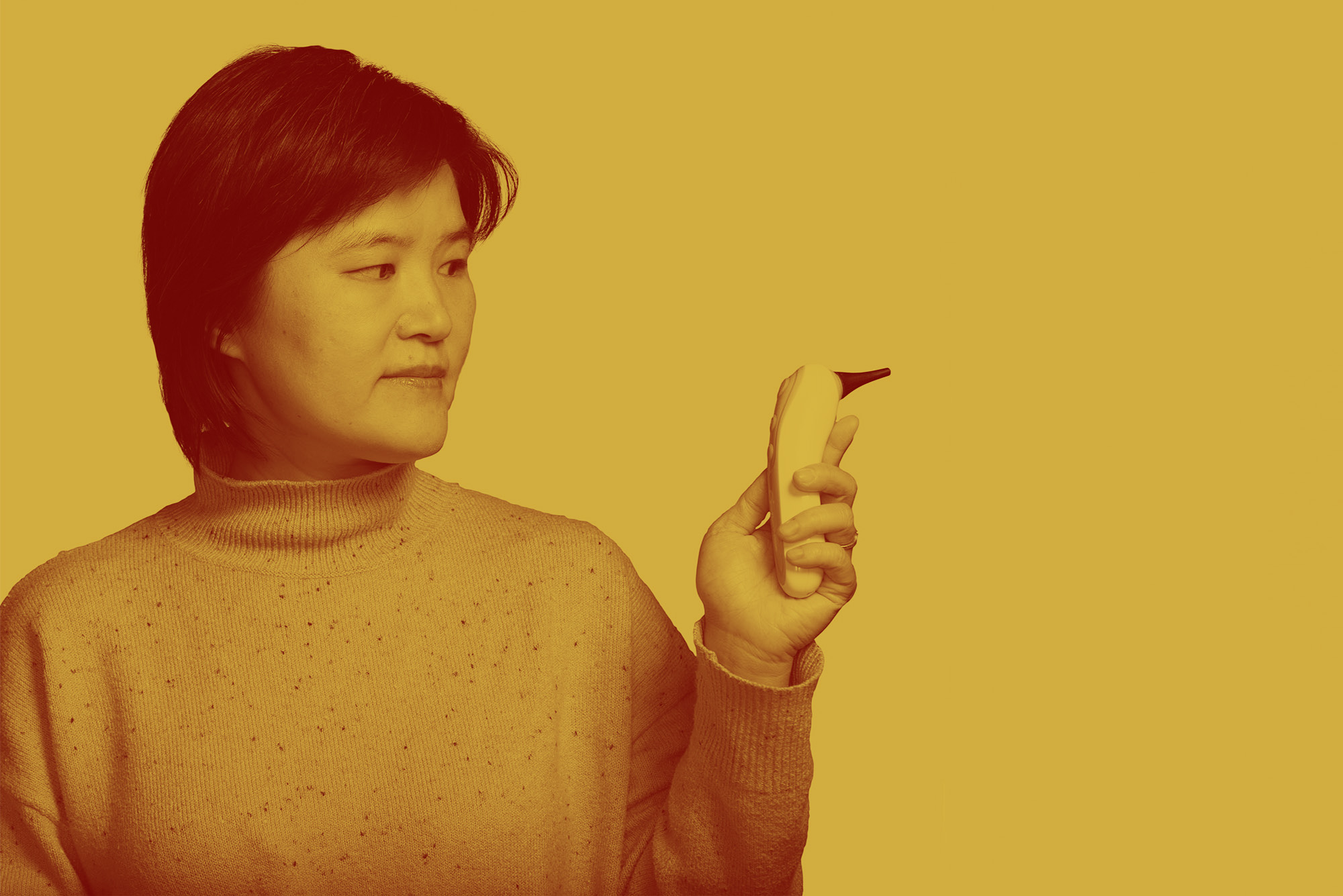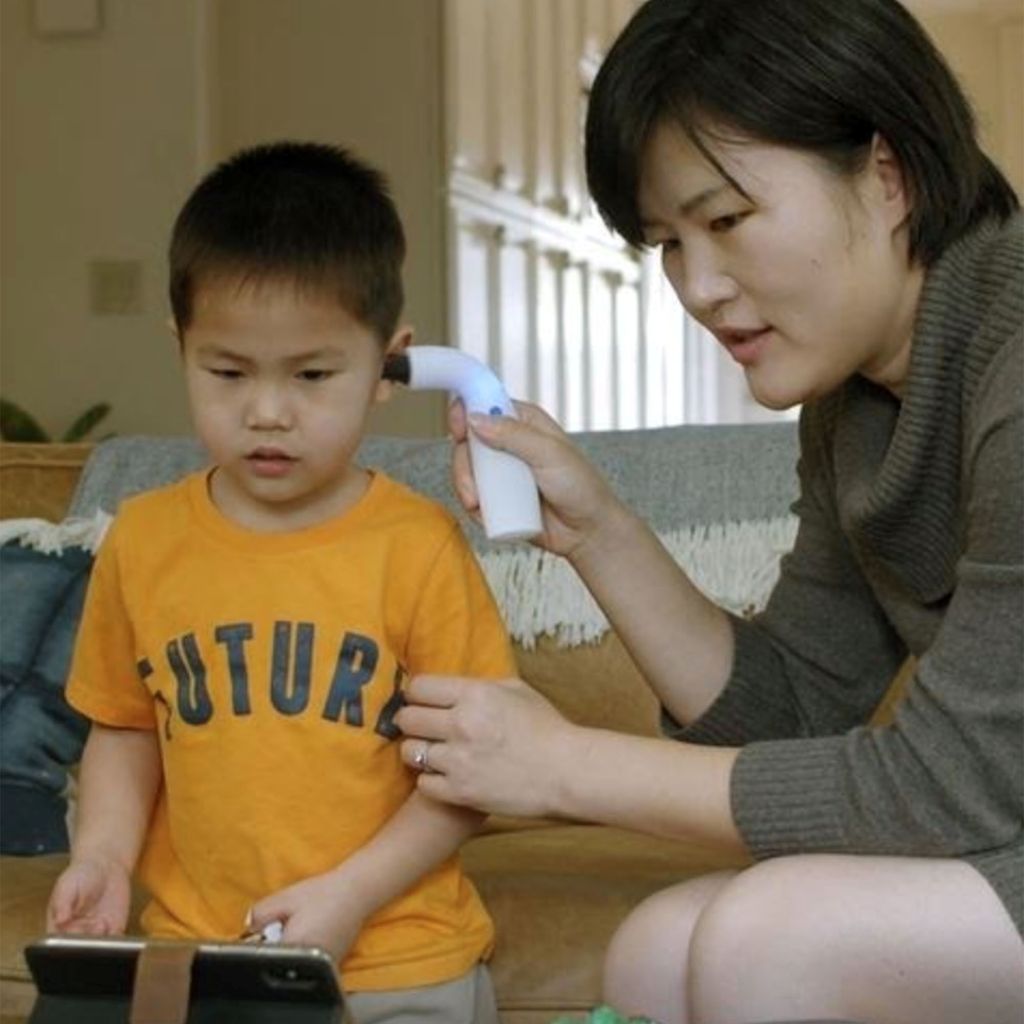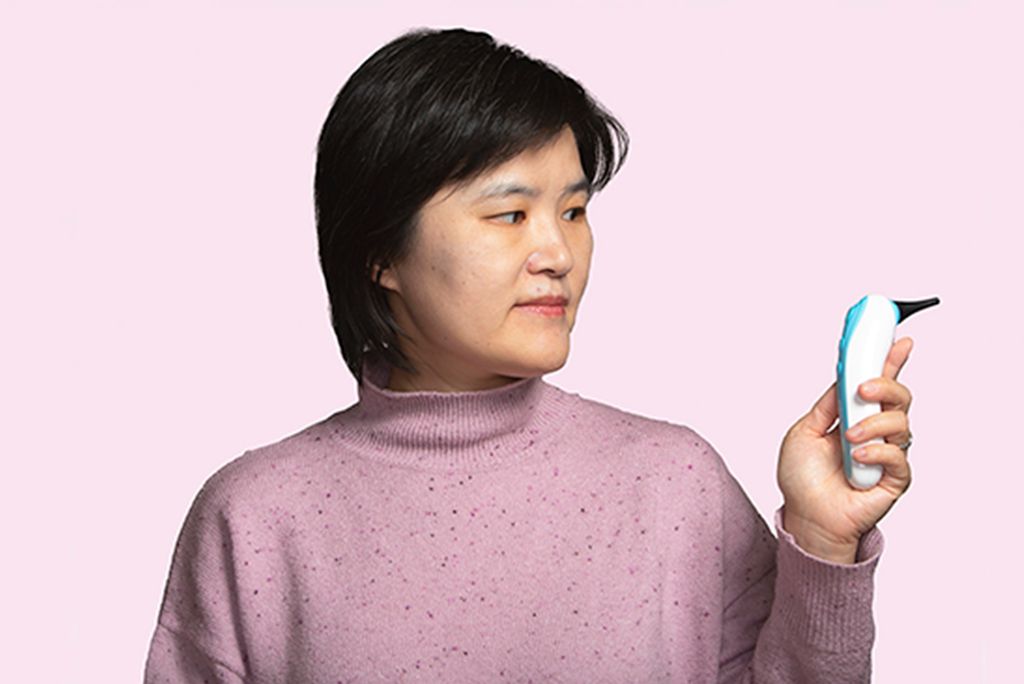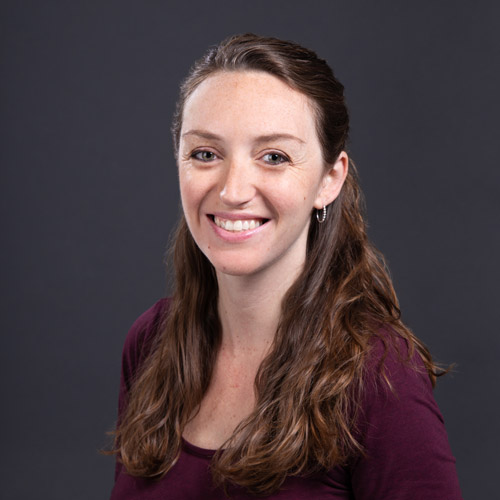My Big Idea: Helping Parents Avoid Repeated Trips to the Pediatrician’s Office

Jane Zhang (ENG’11) says the name Remmie was chosen because it sounds similar to “remedy,” and it came across as warm and helpful. Photo by Ron Wurzer
My Big Idea: Helping Parents Avoid Repeated Trips to the Pediatrician’s Office
BU alum Jane Zhang invented an ENT medical device that connects patients to a telehealth provider for a diagnosis
In our series My Big Idea, we bring you interviews with BU alums and other members of the University community who have launched a business, built a new product, or solved problems big and small. We ask them how they got the idea, what were their biggest stumbling blocks, and what’s next for their big idea.
Back in 2017, Jane Zhang struggled with a problem plaguing all parents of young (germy) kids: her two-year-old son seemed to have an ear infection every other week. The illness kept him out of preschool and meant frequent doctor’s appointments for the family.
“It was just traumatic,” Zhang (ENG’10) recalls. “One time the doctor showed me how to look for white blisters in his throat, a sign of a certain viral illness. And I remember thinking, I’m a bioengineer, but how many people are dealing with this with no medical background whatsoever?”
With her BU PhD in biomedical engineering, an MBA from UCLA, and close to 20 years of research and development experience, Zhang had the right background to come up with the answer. Her idea: invent a device that could look inside her son’s ears and send the images to the doctor’s office for review. The family would be spared a lengthy in-person visit, but would still end up with the right diagnosis and treatment.
She started working on the device in 2018. Today, her Seattle start-up, Remmie Health, has developed an at-home FDA-registered digital monitor, called the Remmie Dolphin, that works in both children and adults. The wireless ear camera allows users to peer inside an ear, nose, or throat and record symptoms in real time in a telemedicine app, allowing the physician to make a diagnosis and provide a prescription, 24 hours a day. The company also sells telemedicine software to physicians.
Currently for sale in some CVS stores in Massachusetts and Rhode Island, as well as on Amazon, the Remmie device also has 1,200 preorders from telehealth companies.
Zhang, who is the company CEO and founder, says the name Remmie was chosen because it sounds similar to “remedy,” and it came across as warm and helpful.
She spoke with Bostonia about her big idea, how the COVID pandemic has influenced telehealth medicine, and her advice for others looking to launch their own business.
This article has been edited and condensed for clarity.
Q&A
With Jane Zhang
Bostonia: What is Remmie Health? Give me the elevator pitch.
Jane Zhang: We aim to deliver an intelligent, near in-person experience for people to seek virtual house visits for their common [ailments], like ear, throat, and nose conditions.
Bostonia: What was the journey like to create a device like this?
Jane Zhang: As a bioengineer, I started looking for monitors, because I thought I could use a gadget if a doctor told me what to look for. I started searching for an ear monitor, and I couldn’t find one that satisfied my needs. I wanted it to be easy to use and be safe. There were some that looked like a stick in your ear, and I thought, I could never do that to my children.
To start, I built something from a 3D printed prototype, and meanwhile, I started business school part-time. I launched Remmie Health while I was in business school, and I joined a few business plan competitions. We won the finalist prizes and an innovation fellowship. Those helped me start this awesome company with my grad school classmates.
Bostonia: What kind of steps were involved in the development of the device? How much trial and error did it take?
Jane Zhang: We started with different shapes and sizes. We did market research and asked people if they wanted it to be shaped like a hammer or a traditional otoscope. What about a handle, to hold it safely and firmly, versus an earbud? We got a lot of feedback from people; they wanted it to have a soft tip and be bendable.
We piloted on Amazon and our own e-commerce site, and collected as much feedback as possible about the ease of use of the app and the device.
We’re the first smart home otoscope, and we’re thinking of more devices that we can build. Potentially, there could be a stethoscope, a thermometer, a pulse oximeter, a scale, a blood pressure monitor. These devices can all be part of this system and be linked up.

Bostonia: Was your son your guinea pig when you were creating these 3D prototypes?
Jane Zhang: Yes! In the beginning, I thought I would build a monitor [to look inside the ear], figuring that would satisfy my curiosity and my monitoring capabilities. But then, with the more people I talked to, the more I realized that not everyone has a medical background, not everyone can manipulate these products. They wanted access and for someone to tell them what they’re looking at, immediately interpret the results, and diagnose them right away. Ultimately, everyone is looking to avoid unnecessary visits to the doctor. It cannot just be a device we give people and say, “Go do it yourself.” It needs to be linked back to a service.
The device came to fruition in 2019, and that was pre-telehealth. Back then, no one really knew what that was, and now everyone gets it.
Bostonia: Definitely, telehealth is hugely popular now, given COVID. Can you talk about this?
Jane Zhang: If you can see who is delivering a package at your door using a smart doorbell, there’s no reason why a doctor shouldn’t be able to see inside the patient’s ear, nose, or throat from thousands of miles away. We’re building that near-patient experience that incorporates the hardware, and the patients can [purchase] software that links the device with providers’ telehealth platform.
The time is short too—a 30-minute appointment compared to a few hours in the emergency room. Obviously, it’s available all the time, and the cost is lower than normal coinsurance.
Bostonia: How will doctors use the system?
Jane Zhang: The physician can see the symptoms, and then there will be an AI [artificial intelligence] engine that they can enable or disable. On top of the images, because this is a camera that captures images and videos, they can overlay the diagnosis assistance. [It uses] probabilities—the probability of this [being] an ear infection is 80 percent versus 20 percent. You can overlay that [and] confirm for diagnosis. A doctor could turn it off if they don’t like it. But it’s assisting. If it’s a mid-level provider looking at these images, they may not be able to diagnose [as easily] as an ENT specialist. With our tools and algorithms, less-trained nonspecialists should be able to diagnose as well as a specialist.
Bostonia: What’s the feedback from patients who have used it?
Jane Zhang: It’s been great. They say it’s very easy to use. The connection is perceived as pretty straightforward. They say it saves them time versus visiting a doctor in person. And obviously, they like the connection service to a telehealth doctor. At least 30 percent mentioned that they engaged with our telehealth service doctors in the past 12 months.
Bostonia: What’s your favorite thing about what you do? What’s the most fun part of the business?
Jane Zhang: First and foremost it’s the people that I work with. The whole company came together when they saw the opportunity, how helpful it would be for customers. We have a very dedicated team. Every time I feel down, the team is bringing the energy back up.
Bostonia: What’s your advice for someone who wants to launch a business?
Jane Zhang: You can never be really ready. Start small, start scrappy, just to implement something. I’m learning every single day, which I find incredibly fulfilling. If you don’t know something, just ask, because there are people out there who already know. And networking is enormously important.


Comments & Discussion
Boston University moderates comments to facilitate an informed, substantive, civil conversation. Abusive, profane, self-promotional, misleading, incoherent or off-topic comments will be rejected. Moderators are staffed during regular business hours (EST) and can only accept comments written in English. Statistics or facts must include a citation or a link to the citation.